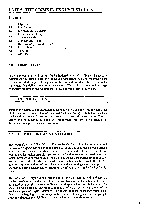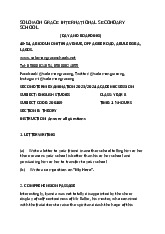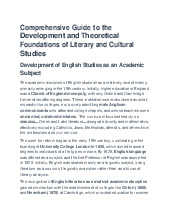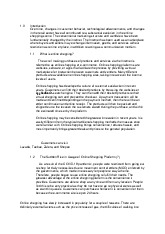




Preview text:
HSC English Studies – Analysing Techniques Worksheet
Aligned with NESA English Studies Stage 6 (2024 exam extracts). Use TEE: Technique → Example → Effect.
A) Quick Reference – Techniques Visual Techniques
• Salience (what draws the eye first)
• Vectors (implied lines of sight or motion)
• Framing and composition (rule of thirds, centred, balance)
• Shot size and angle (close-up, long shot, high/low angle)
• Colour and lighting (warm/cool palette, contrast, symbolism)
• Gaze (demand vs offer) and body language
• Typography and layout (font, captions, slogans in posters)
• Symbolism and juxtaposition (objects/colours for ideas) Literary Techniques
• Imagery and connotation (sensory details, symbolism, motif)
• Simile, metaphor, personification
• Sound devices (alliteration, assonance, onomatopoeia, rhyme)
• Syntax and structure (sentence length, repetition, lists)
• Poetic devices (enjambment, caesura, stanza form)
• Rhetoric (inclusive language, modality, rhetorical questions, statistics, anecdote)
• Tone and diction (formal/informal, emotive language)
B) Visual Techniques Practice
Use the image from Section IV of the 2024 HSC English Studies exam (Wenjia Tang illustration).
Prompts: Identify salience, vectors, colour, composition, gaze or symbolism. Technique
Example (quote/feature) Effect (idea/meaning on audience)
Prompts: Identify salience, vectors, colour, composition, gaze or symbolism. Technique
Example (quote/feature) Effect (idea/meaning on audience)
C) Written Techniques Practice
1) Non-fiction Extract (Memoir – Karen Davis)
Dear Mum and Dad, ... Although we weren’t rich, through careful household and financial
management, you managed to take us on adventures that I – we – still value today ....Your
desire to take us kids to different places, introduce us to a diverse range of people, and
allow us to experience a variety of foods has created the adults we are today. For this start in life, thank you.
Prompts: Identify 3 techniques (e.g., direct address, anecdote, emotive language, listing) and explain their effect. Technique
Example (quote/feature) Effect (idea/meaning on audience)
2) Poem (Emma Brazil – Venice)
I am trying to tell you about Venice, how I felt waking in a crisp white room to rain falling softly in the courtyard outside my window. ...
In Venice I walked on wet stone through a floating cloud. You weren’t there,
so the mist kissed the back of my neck where you would have.
Prompts: Identify 3 techniques (e.g., imagery, metaphor, personification, tone, enjambment) and explain their effect. Technique
Example (quote/feature) Effect (idea/meaning on audience)
3) Prose Fiction (Kate Morton – Homecoming)
The flight back to Australia departed late at night ... She liked to guess at their relationships
and the purpose of travel ... Jess had been that young girl once, twenty years before. She
knew about the excitement on the other side of the gate: the first taste of real freedom, the
thrilling sense of being, at last, in control of one’s own destiny.
Prompts: Identify 3 techniques (e.g., imagery, contrast, flashback, tone) and explain their effect. Technique
Example (quote/feature) Effect (idea/meaning on audience)
D) Success Criteria (self-check)
• I can name at least 5 visual techniques and 5 literary techniques.
• I can identify techniques in unseen texts and support them with examples.
• I can explain the effect on meaning/audience using TEE.
• I can write short analytical paragraphs linking technique → example → effect.



